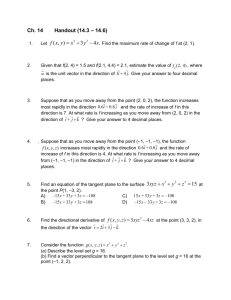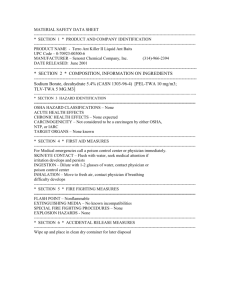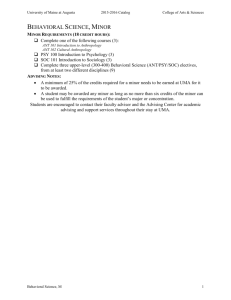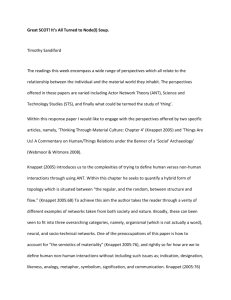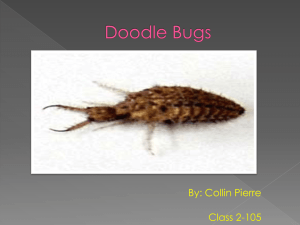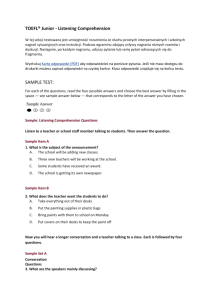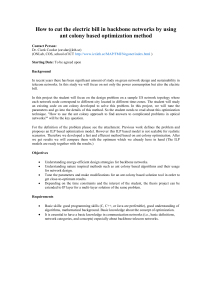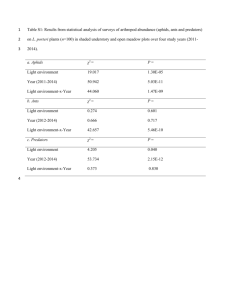East African Acacia Savannas
advertisement
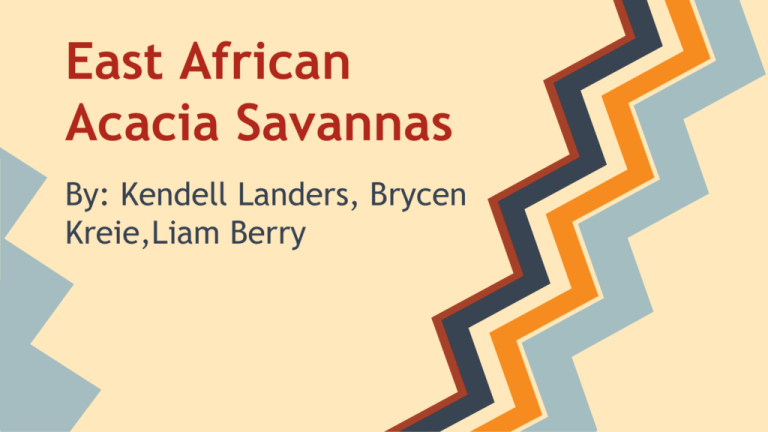
East African Acacia Savannas By: Kendell Landers, Brycen Kreie,Liam Berry Acacia Savannah characteristics ●Contains tropical and desert spots ●Not enough rain to support forests ●Located on either side of equator ●On edges of tropical rainforests ●It is important because of it’s abundance of life Ecoregions Distinct grasslands There are large mountains ranges shrub lands thickets Food Web h Hiena African hawk eagle African lion Horned lizard Gazelle Harvester ant Grass Red oat grass Ecological Issue Description •It is found in eastern africa •Distinct grasslands and savannah large drought • Great numbers of migrating animals •Is the only region where the grey chested spurfowl lives •Large no hunting areas Desertification •Causing livestock and humans to relocate •Trees shrubs etc. are vanishing from this biome. •Due to other organisms disappearing they to must leave Desertification factors some underlying factors are that drought lack of forest and the planting of inappropriate agricultural Combating desertification •Plant proper crops •Plant trees and other life •In windy regions use tree fences to help plants survive and row •use water efficiently Other issues •Lack of biodiversity plant wise •Drought •Poaching Endangered Keystone Species Black Rhinoceros Common name Black rhinoceros Scientific name Diceros bicornis The Black Rhinoceros About 1.6m tall Two horns only Smaller than white rhinos Have hooked lips for eating No color difference than the white rhino Its Role The Black rhino helps shape the landscape The Black rhino eats lots of grass and bushes a day Sadly it gets eaten by large wild cats It places as a primary consumer The Savannas wouldn’t look the way they do now Endangered status Mainly poaching is making this animal go extinct Population The size of the population: about 5,000 (1993) Life span is from 40-50 years reproduction rate:1 calve every 2.5-3.5 years how this affects the population What is being done WWF is expanding existing protected areas and improving their management Establishing new protected areas Improving security Invasive Species Bigheaded Ant Introduction to Bigheaded Ant Scientific name- Pheidole megacephala (Fabricius) Red and brown Larger sized head Mainly nest in rotting stumps. 2 antennas 6 legs Food Web Positioning Primary consumer Eats sugary substances (Both habitats) Also eats smaller insects (African Savannah) Spiders eat the ant (Both habitats) Anteaters (Native habitats) Flies (Both habitats Problem The big headed ant can cause damage by destroying structures and causing debris. Plant mutualism with the Big-headed ant, increases elephant damage to savannah trees. The ant hides in the tree while the elephant breaks down the tree to get them. Transportation of the ant bibliography Website Title: Bigheaded ant - Pheidole megacephala (Fabricius) Article Title: Bigheaded ant - Pheidole megacephala (Fabricius) Date Accessed: September 16, 2015 http://entnemdept.ufl.edu/creatures/urban/ants/bigheaded_ant.htm bibliography Website Title: WorldWildlife.org Article Title: Sahelian Acacia savanna Publisher: World Wildlife Fund Date Accessed: August 25, 2015 http://www.worldwildlife.org/ecoregions/at0 713 Website Title: Biome: Savanna Article Title: Importance of Preservation Date Accessed: August 25, 2015 http://thebiomesavanna.weebly.com/importa nce-of-preservation.html bibliography http://environmental-issues-articles.blogspot.com/2012/12/the-african-savannah-biome.html • title.environmental issues •date accesed 9-9-15 http://www.blueplanetbiomes.org/savanna.htm Website Title: Savanna Biomes Article Title: Savanna Biomes Date Accessed: September 16, 2015 Website Title: WWF - Article Title: East African Acacia Savannas Date Accessed: September 16, 2015 Website Title: WWF - Article Title: Horn of Africa Acacia Savannas Date Accessed: September 16, 2015
